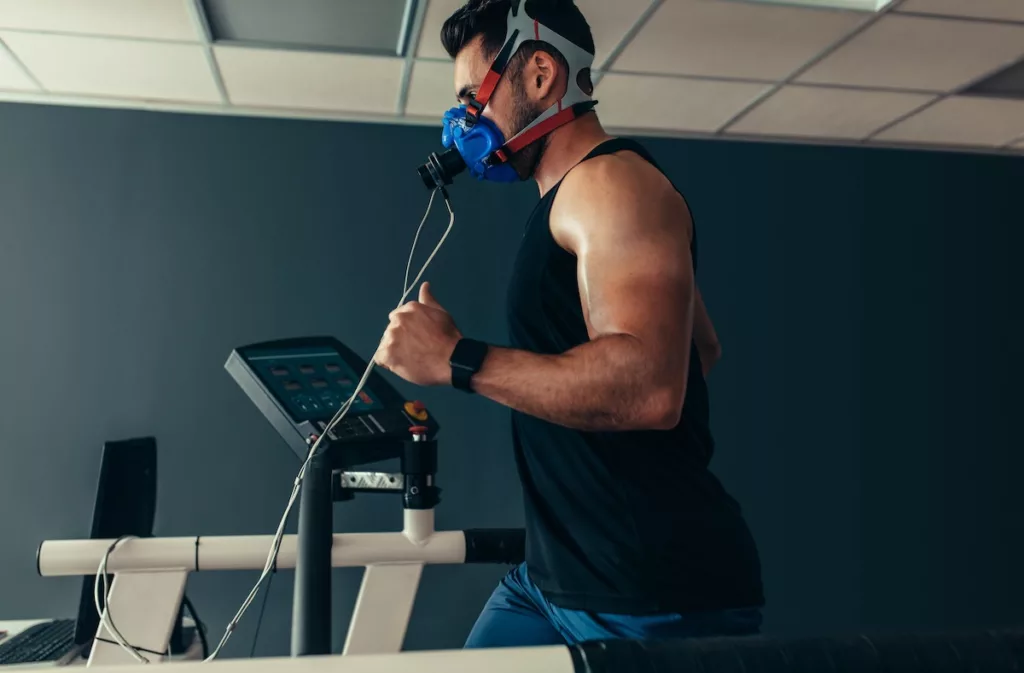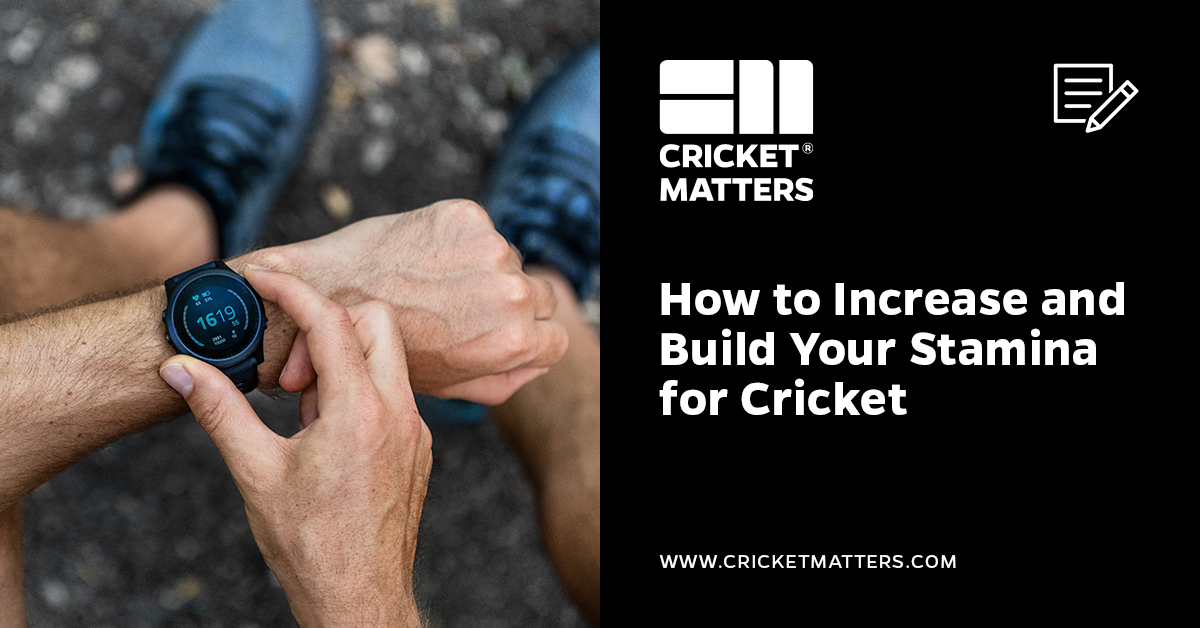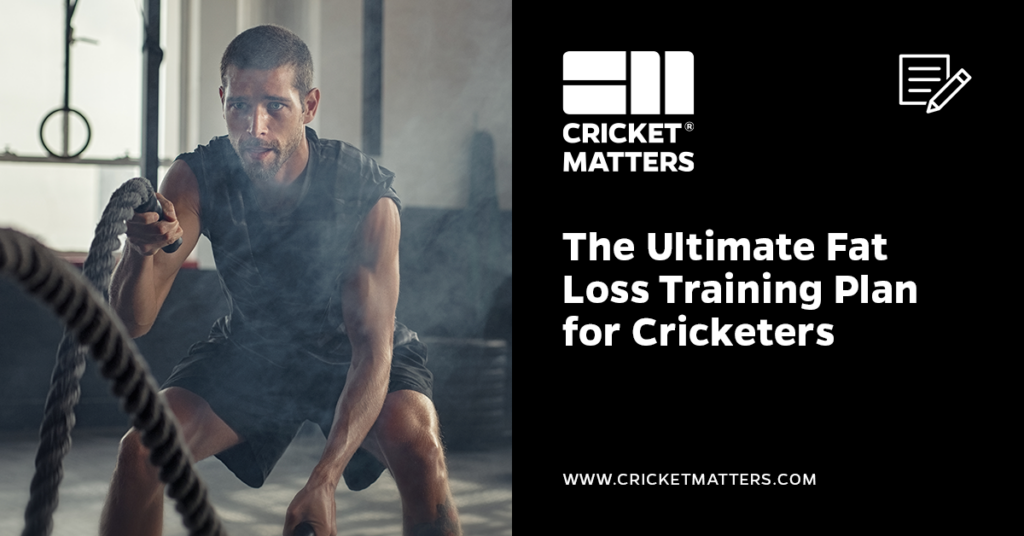
I hope you enjoy reading this blog post.
James Breese, Cricket Matters FounderIf you need my help with cricket coaching, strength and conditioning, injury rehab, or nutrition, click here.
This blog post is an in-depth guide to help cricketers build their endurance and increase their stamina for cricket.
Let’s dive in.
Table of Contents
Introduction
The strength of your heart is imperative to your cricketing performance.
There I said it.
So, let’s start with a trick question: Is the heart a muscle or an organ?
The short answer is your heart is a muscular organ.
An organ is a group of tissues that work together to perform a specific function.
In the case of your heart, this function is pumping blood throughout your body.
Hearts are primarily made up of a particular type of muscle tissue called cardiac muscle.
Coordinated contractions of cardiac muscle, controlled by special cells called pacemaker cells, allow your heart to pump blood as a single functional unit.
I feel it’s important to discuss the structure of the heart, as it is often neglected, forgotten about, and taken for granted.
Inside your heart are four chambers. The top two chambers are called atria. The atria receive blood from other parts of your body.
The bottom two chambers are called ventricles. They pump blood to other parts of your body.
Because of this, the walls of the ventricles are thicker and contain more cardiac muscle.
The interior of your heart also contains valves that help keep blood flowing in the correct direction.
A healthy heart is absolutely essential for your body’s overall health and function, and it’s vital for cricketing performance.
It’s what I consider to be the most important muscle in the body.
Blood provides the cells and tissues of your body with vital oxygen and nutrients.
Without the pumping action of your heart, blood would be unable to move through your circulatory system and other organs and tissues in your body wouldn’t function properly.
Additionally, waste products like carbon dioxide get carried away by blood to be expelled from the body.
So why, oh why, do we get training this vital muscular organ for cricket so damn wrong?
A bold claim, right? Where do I get off?
Well, for one thing, cardiovascular disease is the world’s biggest killer, claiming 17.9 million lives each year.
Is that evidence enough for you?
To compound my claim, I feel we (fitness professionals and strength and conditioning experts) need to take some of the blame, too.
Secondly, take a look at the fitness levels of club cricketers around the world.
As a broad statement, I would argue most batsmen don’t convert their 20s and 30s to 50s and 100s because they run out of puff.
They’re not fit enough.
It’s not skill; it’s their stamina and endurance that let them down.
Why Do Cricketers Hate Training for Cardio and Stamina?

Health and fitness trends are cyclical.
For a few decades, it was common knowledge that fats killed us. Now that isn’t the case (keto!).
On the exercise side, cardio used to be the training of choice—think about the 1970s running boom and the aerobics classes of the 1980s.
Nowadays, hating on cardio is in vogue amongst most fitness communities.
But why do cricketers hate training cardio?
In the 70s and 80s, it was all the rage to run and do aerobics to lose weight, but people quickly caught on to that, and to reach their aesthetic goals, strength training was the way forward.
The fitness world started hating cardio because many people continued to believe that to get in shape, all they had to do was go for a run.
The downside was that some fitness professionals began demonizing traditional cardio and anyone who did it in favour of their modality of choice for strength training.
Extolling the virtues of weights and the perceived failures of cardio is a somewhat slippery slope that can teeter between the intent to inform/ persuade and demeaning/embarrassing those who enjoy doing some form of cardio.
Newsflash! There is a moderate point of view to be had.
Leading professionals now realize that cardio AND strength training both have their place for cricketing performance, and a healthy heart.
I want to throw another two perspectives into the ring as to why cricketers hate cardio.
One, because it’s so damn hard.
It takes time, patience, and commitment, which society struggles with.
If we don’t find something easy, we tend to give up.
And two, we do not know how to train the cardiovascular system properly.
There’s just too much misinformation available online, and health is often sacrificed in the pursuit of body confidence and aesthetics.
My gift to you here is the science behind how we at Cricket Matters approach cardiovascular training to improve your cricketing stamina and performance.

Have You Downloaded Our FREE 7-Day Gym Workout Plan?
Grab your complete step-by-step 7-day gym workout plan for cricketers today. There will be no more Guesswork. Just follow the plan and get results.
What is Cardio and Stamina Training for Cricketers?

Cardiovascular fitness is a good measure of the heart’s ability to pump oxygen-rich blood to the muscles.
We define cardiovascular exercise, or cardio, as exercising at a constant level of easy intensity for a specified duration of 30 minutes and potentially lasting hours.
Easy intensity is the maximum effort at which the cardiovascular system can replenish oxygen to working muscles.
Cardiovascular training improves the ability of the heart, lungs, and blood vessels to deliver oxygen to the rest of the body.
There are two facets of cardiovascular fitness:
- Aerobic (with the presence of oxygen)
- Anaerobic (without the presence of oxygen)
Aerobic training, when done correctly, is sustainable and repeatable in nature.
Typical activities include walking, jogging, cycling, swimming, jumping rope, stair climbing, and rowing.
Anaerobic training, in a cardiovascular sense, when done correctly, is unsustainable and survival-based in nature.
Typical activities could be short all-out bursts in rowing, running, and swimming that last no more than four minutes.
Aerobic training uses the aerobic energy system as its primary source of fuel, and anaerobic training will recruit the alactic and lactic energy systems.
It is a common misconception that anything that raises the heart rate is cardio. This couldn’t be further from the truth.
The heart adapts differently to weight training activities than endurance training.
During strength training, blood flow in the working muscles is restricted until the working muscles relax.
This forces the heart to work anaerobically (without the presence of oxygen) meaning the heart works harder to pump more oxygen-filled blood to the working muscles, which causes an increase in heart rate but DOES NOT get more oxygen into those working muscles.
The heart must contract forcefully to do this, causing blood pressure to increase and ultimately concentric hypertrophy (the heart growing inwards) occurs.
This is not a desirable effect for a healthy heart. Strength training without a good cardiovascular plan can lead to a stiffer, less pliable heart.
It makes the workload much greater, increasing overall stress on the heart.
In stark contrast, endurance athletes who perform for long intervals have a consistent and regular supply of oxygen flowing to their working muscles.
The heart grows both in thickness AND internal diameter.
It remains stretchy and pliable, which ultimately leads to an increased capacity to hold and pump blood around the body.
This is eccentric hypertrophy of the heart and is a very good thing.
Strength training and cardio training are two very different animals.
We are not saying strength training is bad and you should stop immediately. Far from it.
I’m just highlighting that the heart needs to be trained differently based on your fitness goals, and the type of exercises you choose significantly affects how your cardiovascular system improves.
That means you need to look at dynamic, low weight-bearing exercises such as running, rowing, and cycling as your go-to methods of cardiovascular development for cricket.
How Do You Improve the Cardiovascular System for Cricket?

When training the cardiovascular system, we want to:
- Increase the amount of blood pumped by the heart in one contraction
- Increase the heart’s efficiency to deliver oxygen to the working muscles and remove carbon dioxide.
- Improve aerobic and anaerobic energy turnover.
To do this, we have to understand the three factors that determine cardiovascular endurance:
- VO2 Max
- Movement Economy
- Anaerobic Threshold
Because of the differences between disciplines (batting, bowling, etc.) and the need for individuality, it is not possible to provide a one-size-fits-all training plan.
The idea here is to explain how to implement basic principles that allow you to develop a workable plan, and then start the conversation about strength training for endurance athletes.
Taking the four components we discussed above (aerobic efficiency, speed, muscular endurance [ME], and form and technique), we’re going to focus on just the speed and ME parts of the training load and assume solid foundations in both the other two.
The best training plans are always the plans that get done.
A less-than-ideal training plan will give you better results than the best plan in the world, which never gets done.
Often, training plans are presented as a black and white affair. Do this or do that to get x result.
However, experience shows that the human body is far more complex and we must often operate in shades of grey.
That’s why it’s more important to understand the principles of strength training for cricket and not get into the specifics of individual exercises then formulate a plan of attack, keeping in mind your own limitations.
VO2 Max

VO2 Max is defined as the maximum volume of oxygen you are capable of taking in and using during intense exercise.
It is measured in milliliters of oxygen used in a minute divided by the body weight in kilograms (ml/kg/min). It provides an aerobic power-to-weight ratio.
As you now know how the heart responds to different training methods, it is no surprise that those athletes with the highest reported VO2 Max worldwide are endurance athletes, specifically cross-country skiers, runners, and cyclists.
In untrained men and women, their VO2 Max typically shows values in the range of 25-40 ml/kg/ min. In elite athletes, these values will be between 80-95 ml/kg/min.
This is a considerable difference. The more oxygen you supply to the working muscles with each contraction of the heart, the harder, faster, and longer you can perform.
Movement Economy

How much energy does it cost you to move your body a certain distance?
There are two elements to movement economy:
- Technical proficiency (how well you perform the movement)
- Metabolic economy (the fuel source you use [fat or glucose])
With technical proficiency, you simply have to look at how a sub-2:30 marathon runner runs in comparison to someone who completes the race in over 5 hours.
They glide through while the latter struggles. They use less energy to cover the same distance, with better technique, and go faster for longer before tiring.
Metabolic economy is different. For sporting endeavors lasting more than sixty minutes, fuel stores become the major limiter.
Two metabolic pathways create fuel for the body: aerobic metabolism and anaerobic glycolysis.
Aerobic metabolism is the most efficient because it primarily uses fat as the fuel source, which has a virtually unlimited supply of energy.
This takes place below the aerobic threshold (the point at which the levels of lactate in the body start to increase above homeostasis).
Once you go above the aerobic threshold, you start to use a mixture of fat and glucose (sugar) as your primary fuel source.
Once you go above the anaerobic threshold, it primarily becomes glucose. Glucose is not in plentiful supply, which can quickly lead to exhaustion.
When training the cardiovascular system, we have to think about the efficiency of the fuel source we are using just as much as how we improve movement techniques.
That’s why technique in cricket is everything.
The Anaerobic Threshold
The anaerobic threshold is the maximum intensity at which lactate levels will remain elevated but stable for up to an hour.
This is where lactate removal from the body cannot keep pace with the speed at which it is created.

Once above this threshold, you begin to slow down dramatically or even stop. The anaerobic threshold is the easiest to train out of the three qualities.
However, as you will soon learn, to truly maximize your anaerobic threshold, you need to have a great aerobic threshold and be strong enough.
The Cricket Matters approach to cardiovascular training is underpinned by this concept:
if you don’t maximally develop your aerobic energy system first, and have sufficient levels of strength, you will never truly maximize your anaerobic threshold.
Cardio and Stamina Assessments for Cricketers?

As with everything else we do at Cricket Matters, we start with an assessment.
We need to know where you’re actually at, not where you think you’re at.
Otherwise, we’re just guessing. So, assuming you can move well and have the basics of strength dialed in, here’s how we approach the cardio assessments for cricketers.
If you’ve read our High-Performance Handbook, this will start to make more sense, as you now know there are two sides to cardio: aerobic and anaerobic.
Aerobic capacity is a Layer 2 component in the Cricket Matters Training System.
Anaerobic capacity is in Layer 3.
You need to earn the right to start testing for Layer 3 and, from experience, less than 5% of people ever make it to Layer 3 straight away.
So today, we’ll be focusing on just aerobic capacity in Layer 2.
[If you’re not sure about our hierarchy of athletic development, get the High-Performance Handbook for Cricketers].
Aerobic capacity is divided further into sub-layers – we refer to them as Layer 2.1 and Layer 2.2.
You have to pass all the standards in Layer 2.1 before progressing to 2.2; you have to be able to walk, quite literally, before you can run.
| Aerobic Capacity Test | Standard | Achieved |
| 20 Minute Walk Test | 1.5 Miles/2.41km | Yes/No |
| 2000m Row | Men: < 7:50 Women: < 8:55 | Yes/No |
| 5km Run** | Men: < 31 Minutes Women: < 36 Minutes | Yes/No |
**Only prescribed to people who move well, are strong enough, and have proficient experience in running
The way it works here is simple: Everyone will attempt the 20-minute walk test.
If they complete the standard, they will then be prescribed, based on their competency, either the 2000m row test or 5km run test (we also have a 10-minute assault bike test, but there’s a little more to it than the row/run).
For those savvy enough to recognize, these are not true aerobic tests; they are merely work capacity snapshots.
They give us an insight into the cardiovascular development of an individual.
If people struggle here, we know there’s work to be done.
You’ll be surprised at how many people can’t walk 1.5 miles in 20 minutes…
If you meet the minimum requirements in Layer 2.1, we progress to Layer 2.2, a far better indication of someone’s aerobic capacity.
Testing at this stage is sustained activity around the 60-minute mark.
In the elite cricketing world, tests such as the dreaded Yo-Yo and 2km time trials are common.
We think they’re great testing criteria for the elite. However, for club and aspiring cricketers looking to start their athletic journey, we find these tests more appropriate as we can compare times and scores to the general population.
Why a walk test?
We’ll cover this far more in-depth at some point, however, think about it logically, how much walking do you do in a game of cricket?
Build up your walking speed reserve, and it has a huge carryover in recovery and game-day performance.
| Aerobic Capacity Test | Standard | Achieved |
| 10km Run | Men: < 48 Minutes Women: < 55 Minutes | Yes/No |
| 60-Minute Row | Men: > 15,000m Women: > 13,000m | Yes/No |
| 60-Minute Assault Bike | Max Calories. Unique to Individual. | N/A |
**Only prescribed to people who have passed Layer 2.1 tests
The standards listed above are what you need to achieve to progress to Layer 3 and begin anaerobic training.
Can you see now why so few people ever achieve Layer 3 status? This doesn’t even include the ability to move well or our strength standards.
Each 10-km run and 60-minute row has standards attached.
This is based on thousands and thousands of data points from across the globe in both running and rowing events.
The assault bike test is unique to the individuals involved.
People will excel at one and maybe not another. It’s about choosing the right modality for the person we work with.
For cricketers, I would argue the 10km run is the most important test and the one they should be striving for, the other tests are optional in case anything prevents you from running that 10km, for example injury.
How Can Cricketers Build Stamina?

Cardiovascular training is hard but the issue I see with most cricketers is that they start doing cardio workouts that far exceed their own ability.
Most people shouldn’t go anywhere near high-intensity interval training (HIIT). You need to start training within your means then slowly and progressively build up volume.
This is both for biological benefits and enjoyment – you won’t continue what you don’t enjoy!
Often, it starts with good old-fashioned walking.
If you’re not walking at least 7,000 steps daily, this is your cardio starting point. You would then build it up to 10,000 and maybe 15,000 steps a day.
Both are easily achievable if you schedule a 30-minute walk into your routine every day. Scheduling a daily walk is key if you can’t hit the 1.5-mile walking standard in 20 minutes.
Once you hit the walking standards, you can then start to tackle some of the other tests – the row or even the run.
Both require a similar approach: We need to train the aerobic system, NOT the anaerobic system. This means working below 70% of your max effort (Zone 2 heart rate training, if you’re a geek like me).
This is how we understand the relationship between the aerobic and anaerobic energy systems and know where you currently are on the cardio training spectrum.
Volume, consistency, and patience are key to cardiovascular success, combined with the working knowledge of the importance of strength training and the development of the aerobic energy system prior to working the anaerobic energy system.
You’d be best served spending more time doing higher volume at a lower rate of perceived effort.
Over time, you’ll get faster, and it’ll become easier. Then you can tackle some of the harder tests with an even bigger smile because, guess what?
When it’s easy, it’s a lot more fun.
Until you can hit those baseline standards outlined in Layer 2.1 and Layer 2.2, aerobic threshold work is where you need to spend most of your time.
Having a high aerobic threshold allows you to perform more tasks, better and faster, and enables a faster recovery.
It’s preparing you for the anaerobic work in Layer 3.
The simplest way to train your aerobic threshold and build stamina is to use the MAF method. Start by subtracting your age from 180 (180 minus age).
Then, whilst performing aerobic activities (running, walking, rowing, swimming, cycling, etc.), the goal is always to keep your heart below that level, easily observed with a smartwatch or heart rate monitor.
The easiest way to get started with this method is, at the end of your current workout, add five minutes of aerobic threshold work – either on a rower, assault bike, or going for a walk.
Keep your heart rate at your MAF and progressively do more, building up to 15 minutes of work.
Then, when you feel comfortable, maybe supplement an entire day to just cardio training, using the same method.
Start at 10 minutes and gradually add five minutes each week until you can hit 60 minutes of continuous work.
Final Thoughts: How to Build Stamina for Cricket

Your results will be directly proportional to the amount of work you put in.
Building your stamina and cardiovascular engine and developing your aerobic threshold takes time, effort, and dedication.
But I promise you, for cricket, it’s worth it in the long run.
Just think about it, the fitter you are, and the more stamina you have, the longer you can bowl for.
The fitter you are, and the more stamina you have, the more you can run between the wickets, and specifically for batsmen, the fitter you are, the faster you can recover between running and be prepared for the next ball to think clearly and not get out.
Being cardiovascularly fit and having stamina helps you concentrate better for longer, a key aspect of cricket.
This then translates to improved performance and more enjoyment on the cricket field. Leave those HIIT workotus behind, and go get aerobically fit.
Building stamina is more than just being fit. It’ll change your game.
If you need help with any of this, feel free to schedule a FREE Strategy Call with me.
Further Reading
FAQs
What Are Effective Ways to Increase Stamina for Cricket?
To increase stamina for cricket, engaging in aerobic exercises like long-distance running or cycling, combined with HIIT, is essential. This combination not only improves overall endurance but also conditions the body for the high-energy bursts typical in cricket.
How Important is Cardiovascular Training in Building Stamina for Cricket?
Cardiovascular training is critical in cricket for improving the efficiency of heart and lungs, thereby enhancing the player’s endurance. Regular activities like swimming, cycling, or brisk walking significantly contribute to maintaining cardiovascular health.
Can Interval Training Improve Cricket Stamina?
Interval training, with its mix of intense activity and rest periods, mirrors the energy demands of cricket. It improves recovery time and helps the body adapt to varied intensity levels, enhancing overall stamina.
What Role Does Diet Play in Enhancing Stamina for Cricketers?
A balanced diet, rich in energy-sustaining carbohydrates, proteins for muscle repair, and adequate hydration, is crucial for stamina. Nutrient timing, such as consuming carbohydrates before the game and proteins afterward, also plays a vital role.
Why Do You Need Stamina in Cricket?
Stamina in cricket is vital because the sport involves prolonged periods of play, requiring both physical and mental endurance. High stamina levels help players maintain peak physical performance throughout the game, aiding in activities like batting, bowling, and fielding. Equally important, good stamina supports mental clarity, enabling cricketers to make better decisions under pressure, react quickly, and maintain focus, which are crucial for success in cricket.
How Can I Play Cricket Without Getting Tired?
To avoid getting tired while playing cricket, it’s essential to increase your stamina specific to the sport. Regularly playing and training at high intensity helps your body adapt to cricket’s demands. Incorporate endurance exercises, such as running or cycling, to enhance overall stamina. Strength training can improve muscular endurance, vital for cricket. Proper nutrition, hydration, and adequate rest and recovery are also crucial to maintain energy levels during gameplay.



![[Case Study] Advanced Hiit Training Plan for Cricketers 5 Hiit Training for Cricketers](https://www.cricketmatters.com/wp-content/uploads/2024/04/HIIT_Training-1024x536.png)